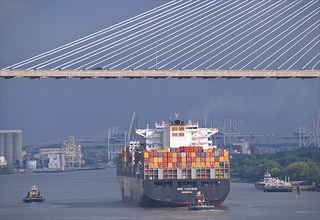 With the peak season just past, carrier owners and operators will spend the coming month focusing on adjusting capacity across the board, according to the Baltic and International Maritime Council (Bimco).
With the peak season just past, carrier owners and operators will spend the coming month focusing on adjusting capacity across the board, according to the Baltic and International Maritime Council (Bimco).
The strong growth numbers of June (9.7 percent) and July (8.2 percent) paved the way for the US$895 per TEU (20-foot equivalent unit) increase in freight rates at the end of June and $141 per TEU at the beginning of August.
Even though the September numbers are still pending, freight rates tell a story of poor demand growth.
“On the Far East to Europe route, the widely announced 1 October change to freight rates was dismissed before momentum arrived; now 1 November is the next yardstick for measuring the bargaining power between the individual carriers and their customers,” said the council, the largest of the international shipping associations representing ship owners.
The idle fleet numbers offer little comfort that earnings will improve significantly unless several tools are applied, it added. The idle fleet stands at 416,000 TEUs (20-foot equivalent units), or 2.4 percent of the fleet, which is some 50 percent below the level at the same time last year.
But Bimco said that a lot of “blank sailings” and temporarily services withdrawals are managing to lift the utilization level of the deployed fleet. During the July-August lift of freight rates, the idle fleet did not go beyond the 470,000 TEU level.
The group sees positive monthly growth rates in the final months of the year due to the disappointing 2012 level of transported containers. “Anything but that would be the result of an unexpected setback in U.S. and European consumer demand,” it said.
Last year, volume growth was negative on the Far East- Europe route, and flat on the trans-Pacific trade.
Supply still needs to be actively managed, even as demand is seen to grow stronger in the coming years. This, said Bimco, is because the industry will still be in the single-digit growth range compared to the double-digit growth during most of 2000 to 2009.
An increase in slow steaming, the deployment of larger numbers of vessels in selected services, more recycling activity, and network optimization are developments forecast for the future.
Photo: Ron Cogswell




